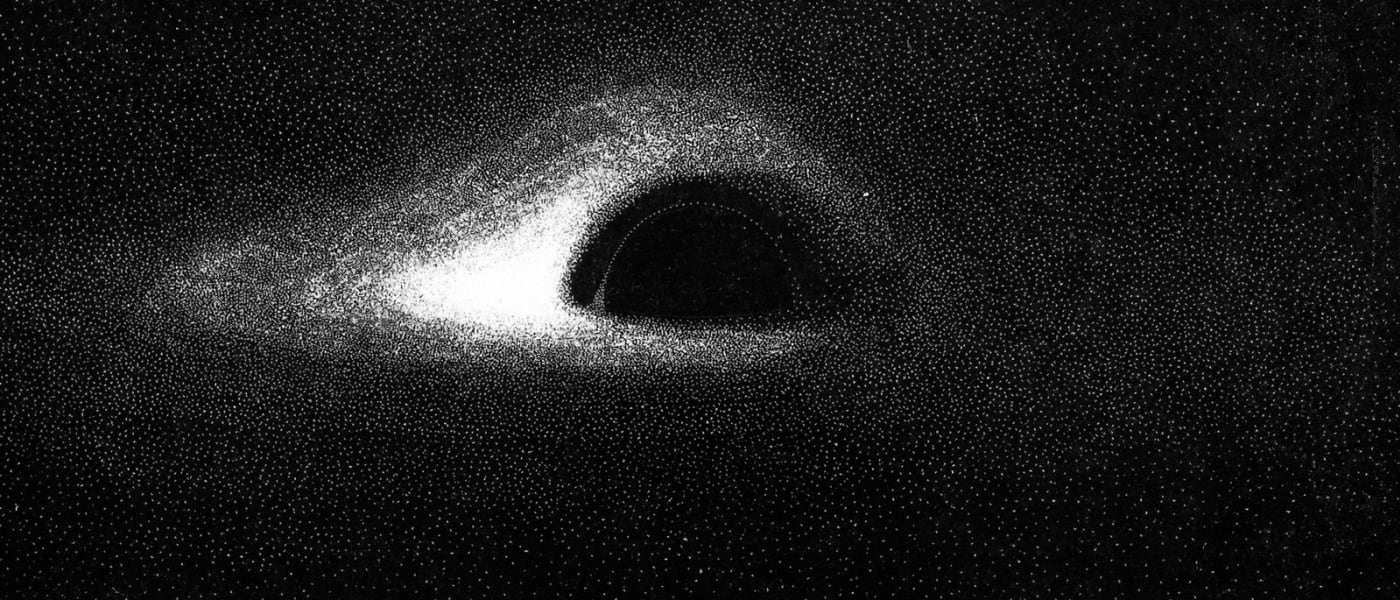 |
| Image credit: Jean-Pierre Luminet |
Black holes are so
outlandish that the scientists who first thought them up figured they couldn't
possibly exist in reality. They form from massive, collapsed stars and are so
dense that nothing can escape their gravitational pull, including light. Black
holes mess with spacetime so badly that scientists have long wondered: How do
these things look, exactly?
We may be on the cusp of
seeing one thanks to the Event Horizon Telescope, but back in 1979, Jean-Pierre
Luminet created the first "image" using nothing but an early
computer, lots of math and India ink.
The problem with imaging a
black hole is that, by definition, they don't emit light or radiation. Luckily,
large black holes are usually next to other stars and suck away their matter,
something astronomers can see. "As [gases from stars] fall towards the
black hole, it becomes hotter and hotter and begins to emit radiation.
This is a good source of
light: the accretion rings shine and illuminate the central black hole,"
writes Luminet in his e-Luminesciences blog.
The distinguishing feature
of a black hole is its "event horizon" boundary, the point of no
return for matter and light. At its periphery, materials sucked in from
adjacent stars form an "accretion disk," famously depicted in
Interstellar (below) as two bright, perpendicular disks.
That's just an illusion,
though -- there's only one disk at the equator, but the light is bent upward by
the black hole's extreme gravity (via gravitation lensing).
Luminet's stunning image
depicts two other important phenomena not seen in Interstellar movie.
You can read the complete article here.
